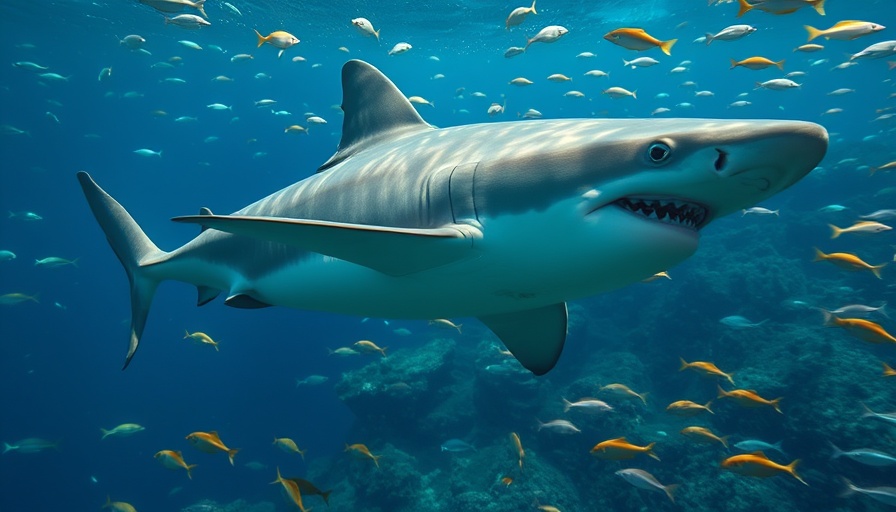
Are Sharks an Overwhelming Problem in the Gulf?
Shark encounters in the Gulf of Mexico are stirring conversations among beachgoers and researchers alike. With an uptick in reported incidents, many are questioning whether these magnificent creatures pose an overwhelming problem or if the reality is more nuanced. Studies indicate that shark sightings have grown, and while the number of shark-related injuries remains low, the presence of these predators raises concerns.
The Science Behind Shark Interactions
Researchers are diving deep to understand when and why these encounters occur to foster a safer beach environment. Factors such as rising water temperatures and increased baitfish populations—drawing sharks closer to shore—could be contributing to more sightings. Moreover, the recreational fishing boom in certain areas has resulted in more interactions between humans and sharks.
Preparing for Shark Encounters: Safety Measures
While the prospect of shark encounters can be daunting, knowledge is key to prevention. Beach safety officials are beginning to use drones to monitor shark activity in real time, giving swimmers a heads-up before they enter the water. This technology enhances safety by allowing families to enjoy their beach days with more confidence. Enhancing awareness of swimming patterns can further reduce unnecessary risks and encourage safer behaviors in the ocean.
Sharks in the Ecosystem: A Necessary Presence
It is essential to view sharks not just through the lens of beach safety but also as a vital part of the marine ecosystem. As apex predators, sharks help maintain the balance of oceanic life by controlling fish populations and keeping other marine species in check. Protecting sharks is not only about human safety; it’s about preserving the health of our oceans.
Community Perspectives: Fear vs. Understanding
Residents and beachgoers often experience a mix of excitement and fear regarding shark encounters. While some feel that sharks pose a significant threat to their safety, others advocate for a more balanced understanding of these creatures’ roles in the ecosystem. Community discussions surrounding shark sighting experiences reveal a spectrum of opinions and highlight the importance of awareness and education.
What Lies Ahead: Future Trends and Technology
As shark populations continue to recover, coupled with evolving technologies like real-time monitoring systems, the relationship between humans and sharks is bound to change. Future predictions suggest that investment in shark research and conservation will lead to better awareness and, ultimately, safer beach environments for all. Collaboration between environmentalists, researchers, and local communities will be imperative in creating an informed perspective about coexisting with sharks.
Embracing this understanding can lead to practices that benefit both marine life and beachgoers. Knowledge about sharks should empower individuals to enjoy the ocean more safely and responsibly, ensuring that we respect these creatures while also safeguarding our own experience.
For everyone who loves the beach, a proactive approach to understanding sharks in our waters is essential. Together, as we explore the depths of this topic, we can foster a safer, more informed community by appreciating this critical aspect of marine life.
 Add Row
Add Row  Add
Add 




Write A Comment